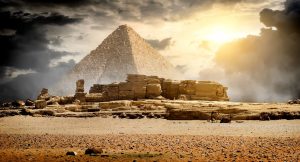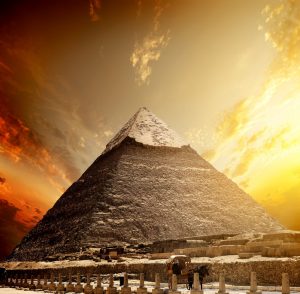Photography is an interesting and creative skill to have. Photography has changed so much since its invention – you’ll be surprised at just how much it has changed.
Until recently, taking photos meant hoping that what you saw in the viewfinder of the camera would be replicated on the printed photo.
You took photos until the film reel was full, you carefully took it out from the back of the camera so as not to expose it to light and sent it off to be developed. In the height of summer, when everyone sent their holiday films to be developed, you could wait up to two weeks before your photos arrived.
And then pharmacies started their ‘hour developing’, meaning that no longer did you need to wait weeks for your holiday snaps to be returned only to find that out of a role of 27 photos, only two or three were any good.
Today, we live in a very different world of photography.
The concept of photography
As a concept, the art of capturing a moment in time has been around since the 5th Century but it wasn’t until the creation of the camera obscura in the 11th Century that photography was really born.
But the 11th Century camera didn’t take a snapshot but rather reflected an image on another surface. And it was upside down. But the basics were there…
1830s
In the 1830s, Joseph Nicephore Niepce used a pewter place, light and bitumen, and the camera obscura to capture the first recorded image that did not fade.
This success led to all kinds of changes and experiments;
- Daguerreotype – this was the use of copper plate coated with silver to capture a moment in time. It relied on exposure to light and the reaction with iodine vapour as well as the copper plates. It took 15 minutes to capture the shot – imagine holding the same pose for a quarter of an hour.
- Emulsion plates – these came next and were used mainly for portrait photography. There were two types – tinplate and ambrotype – and instead of posing for 15 minutes, these wet plates took only two or three seconds of exposure to capture the photo.
Dry plates
From the 1870s onwards, photography came on leaps and bounds with the development of the box camera. This was the start of what many of us remember as 35mm but this didn’t come about until the 1940s.
However, by the mid-20th century, photography was no longer just for those who could afford the expensive and very big cameras. With the box camera, ‘ordinary’ people could start to take their own photos.
Photography and war
The world has seen and continues to see, conflict and war. The Second World War was a major conflict that changed the course of human history and in more ways than you think.
For example, the closed-circuit television (CCTV) that many of us rely on to keep our homes and businesses safe, as well as monitor manufacturing processing and production lines, was first used during WWII.
The Germans wanted to monitor the take-off process of the V2 rockets that they planned on sending over the London and did so with what we now know as CCTV.
The smaller, 35mm cameras were used widely by both war photographers during WWII and some troops too that captured the horrors of war. During this time, photography and tools we used, including film, rapidly developed to capture in black and white the human story behind the war.
Image control
With film the main vehicle for capturing images, it wasn’t long before it started to be refined.
The introduction of colour in the late 1960s and 70s meant that we started to have an appreciation for image control, although some of these early colour photographs presented us with some rather odd colour combinations!
From the 1950s onwards, the pace of change in the world of photography was huge with Pentax and Nikon coming to the market as major photography equipment brands.
As well as developing the SLR models, Polaroid was also pushing the boundaries of instant photos with their cameras. Although expensive, it started the idea that taking photos didn’t need to be something that we needed to wait for results.
The digital age

But today, many of us are taking selfies and snapping away on our digital cameras, using Photoshopping software to make subtle changes to the final photo.
Cameras are everywhere. They are small, powerful cameras on our phones and small cameras that we take on our travels with us.
Kodak produced the first film-less camera in 1991 and since then, we haven’t looked back. And people are enjoying photography too. And if you do, you too may want to enrol onto one of the many photography courses online on offer.
Due for release in June 2017, The Mummy stars Tom Cruise, Russell Crowe and Sofia Boutella.
In the film, Princess Ahmanet (Boutella) was burned alive beneath the sands of Egypt over 2,000 ago, as punishment for killing her father. When her tomb is rediscovered and opened in modern times, she remerges as a malevolent sprit that has grown in intensity and terror over the millennia. The whole of humanity is at risk.
There is no doubt that the film will re-ignite the mysteries that surround Egypt and the tombs of the pharaohs. Because, even though it is a highly-researched era of history, we are still missing many of the pieces that could potentially unlock various mysteries.

5,000 years after the ancient Egyptians walked the earth, we are still discovering their secrets and unravelling their mysteries.
So, what are these mysteries? And will we ever unravel them?
Mystery 1 – What did ancient Egyptians look like?
With all the mummies, statues and engravings left behind by the ancient Egyptians, you would assume that we understood what they looked like and what they were.
But some Egyptologists believe that the ‘Hollywood look’ as they call it, has changed our perception. Egyptians were a diverse range of people and they did not have a propensity to mark out different skin colours as the films did – white people in powerful roles and black servants. They were a race of ‘all colours’ – those who spoke the language, worshipped the king and the proper gods were considered Egyptians.
Mystery 2 – How were the pyramids built?
They dominate the landscape and are the monuments that everyone wants to see, but the mystery of how the pyramids were built in the days before cranes and diggers is yet to be unravelled.
Just how did a society with no known modern construction methods manage to move giant blocks of rock, let alone pile them on top of one another to create a 3D triangle?
We are some way to finding the answers. Egyptian desert sand when wet has half the friction and thus, believe experts, a smaller team of men would be needed to pull a sledge on wet sand.
Other than that, engineers and Egyptologists are still working out how this ancient race of peoples built such complex structures. Maybe we will never know…
Mystery 3 – How did King Tutankhamun die?
His tomb was discovered in 1922 but the details of his life and death at 19 years of age remain somewhat of a mystery.
He was buried in haste, giving the idea that his death was unexpected. This led to theories that he died because of an accident, such as an overturned chariot. History courses online and in the classroom could only hint at what was really the answer.
Modern scanning and DNA profiling have led to some interesting discoveries. King Tutankhamun had a ‘club foot’ and a curve of the spine, which Egyptologists believe would have made it an almost physical impossibility for him to control a chariot with two charging horses.

Just how did a society with no known modern construction methods manage to move giant blocks of rock, let alone pile them on top of one another to create a 3D triangle?
What they did discover was a DNA profile that was very similar to that of other family members, not a startling revelation on its own but when you consider that he was a product of incest, you can immediately see how very little we understand of this Egyptian royal family.
Mystery 4 – What is hidden in the Great Pyramid of Khufu?
We believe that members of the family were buried with treasure and food to help them on their way into the afterlife and so discovering long-lost treasures is not uncommon.
But the largest pyramid at Giza has yet to give up its secrets. A scan of the building in 2015 has given rise to the discovery of ‘thermal anomalies’, suggesting that there is something within the structure.
As yet, there are no conclusions. Maybe there is another tomb…
Are you a history detective?
5,000 years after the ancient Egyptians walked the earth, we are still discovering their secrets and unravelling their mysteries.
If you enjoy unravelling mysteries of the past and examining ancient peoples of the past, then History courses online are perfect for you.
They allow you the opportunity to study what we know or think we know about all kinds of peoples, civilisations and happenings of the past. It is a chance to examine the evidence and draw conclusions.
The study of history allows us to chart progress but also to look forward, to examine how we reached where we are today and how the future could be shaped by the happenings of the past.
There is no doubt that the film ‘The Mummy’ will once again ignite interest in the tombs of ancient Egypt and no doubt the superstition that those that disturb the tombs of the great kings and queens bring bad luck on themselves…
Released in China in mid-December 2016, the ‘Great Wall’ film starring Matt Damon in its lead role, discovers the mystery behind one of the greatest wonders of the world – the Great Wall of China.
Wave after wave of magical beasts attack the massive structure, and to defend it, Damon’s character goes on a journey of self-discovery, joining a huge army of elite warriors to do the unthinkable and stop the seemingly unstoppable force.
A Voyage of Self-Discovery
In 2000, there was an initiative to choose 7 new wonders of the world from a selection of 200 monuments. Of the winners, the Great Wall of China was one of them.
The ‘new’ list differs from the ancient wonders of the world. The classic wonders include the Great Pyramid at Giza and the Hanging Gardens of Babylon.
Other sectors also have their own seven wonders, such as the 7 Engineering Wonders of the World among which the Channel Tunnel is included.
Take time to research the wonders of the world and you will begin a voyage of discovery, unearth stories and conflicts that gave rise to some of the most amazing monuments the world has ever seen.
What is even more astounding is that many of these monuments, such as staircase pyramids built by the Mayan peoples, were completed without the aid of the wheel or machinery. How did the Mayan people move such heavy blocks of stone from ground level to so high above? How did the Egyptians complete the same feat?
Finding the answers to some of these questions will lead you on a journey of self-discovery. They will lead to interesting places, as well as firing your imagination.
And this is why learning is so important. From a new hobby to new skills, learning at any time of life, no matter how young or old the student, is a voyage of self-discovery that is priceless.
Why study history courses online?
For many, history is a hobby, a chance to look back and enjoy stories of the past. For others, it is a field of important academic study.
- Stories of the past – discover the stories behind some of the most infamous incidents from the past, from the did she/didn’t she debate of Emily Davidson and King’s horse as part of the suffragette history, to the complex social, political and economic background to American slavery.
- Learn from mistakes of the past – the captain of the Titanic used all the information and knowledge given to him against him. Now how can we change that to prevent future disasters?
- Meet great people and peoples – the culture of peoples long gone leave behind traces of their society of which we have little understanding. The mystery of Stonehenge, for example, has never been solved – but why is it there?
- A magnifying glass for the future – after World War II, the leaders of the world said it should never be allowed to happen again. The mass extermination of Jews in Nazi Germany, they said, will never be repeated. And yet, mass slaughter of the Tutsis in Rwanda in the early 1990s bore unnerving similarities, as have other genocides.
- Wisdom and knowledge – these two go hand in hand. With the study of online history courses, you will develop and soak up so much interesting information that you will wonder how your brain will cope with it all.
- More tolerant – the world is full of interesting peoples and cultures. But as we have seen in recent tumultuous years, when these cultures and societies meet, the lack of tolerance and understanding leads to conflict and war. By understanding cultures and tradition – even if you disagree with them – you become more willing to embrace difference.
- Flexible online study – history is often seen as a tough subject. It is an academic form of study, with lots of reading and long essays to write. This may sound daunting but, on the other hand, you will become far more organised in your thoughts and your writing abilities. Online study is flexible: you study when you want, at a time and a pace that suits you.
To understand our past, is to understand our future, the how and why things changed. But also, in the uncertain times in which we live, history can also help us understand why political regimes create something like the Great Wall of China. In a hundred years’ time, will history courses online be talking about the Great Wall of Mexico?
